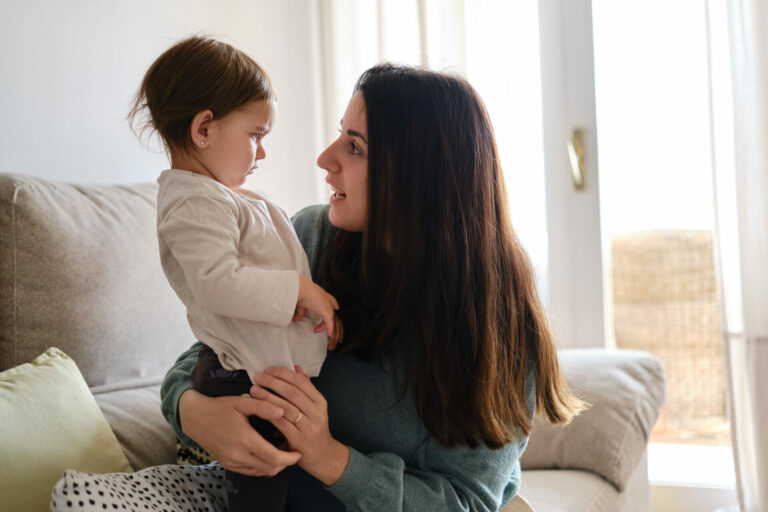Part 2 in the Self-Regulation Series
Taking a break is a simple way to pursue self-regulation. In times of elevated emotion, though, it can be hard to think of how to take a break. What does one even do to take a break when things are overwhelming? Making a plan for ways to take a break before the need for one arises can be helpful.
Many adults possess the executive capacities and self-awareness to make plans for themselves to take a break. Children, however, may need co-regulation to take breaks. They may also need to be taught how to take breaks to eventually learn to use this skill on their own (Day, 2019). An adult who has never learned to take breaks may need support as well. This may come from a friend, partner, mentor, coach, or therapist.
That being said… what does taking a break look like? Taking a break looks like stepping away from the current situation to do something enjoyable (Day, 2019). This break should not have demands, as demands can be part of the stressors necessitating the break. Breaks can either up-regulate (energize) or down-regulate (calm). Breaks can be mental, physical, or spiritual in nature (Yoo, 2018). Most people benefit from trying out different regulatory strategies to discover which work best for them (Huebner, 2008). Practice also teaches the brain how to access the “take a break” pathway when upset or overwhelmed.
With a little preparation, taking a break can be very accessible (for adults and children). Preparation might look like setting up a place for taking a break. This could be a comfortable chair, a special corner of a room, or when nothing else is available, a bathroom that allows for a closed door and some quiet (Sabiston, 2016). Preparation could also look like making a list of strategies (Art It Out, n.d.). Adults might do this in a phone note. Adults helping kids with taking a break might use flash cards or a written and posted formula (Schmidt, 2022; Movement Matters, 2022). Preparation might also involve making a calm-down kit (Day, 2019). This kit might include sensory stimuli such as scents, sights, or sounds that down-regulate the body (Schmidt, 2022). The best preparation for taking a break should include multiple strategies.
With up-front understanding, preparation, and planning, taking a break becomes easy to access and simple to do. This is the goal when using breaks to help with self-regulation. Self-regulation is about getting oneself back to baseline, in touch with higher functioning, and able to solve problems so that maybe next time, self-regulation will be even more accessible, perhaps even in the moment!
Lecturas recomendadas
Part 2 in the Self-Regulation Series
Taking a break is a simple way to pursue self-regulation. In times of elevated emotion, though, it can be hard to think of how to take a break. What does one even do to take a break when things are overwhelming? Making a plan for ways to take a break before the need for one arises can be helpful.
Many adults possess the executive capacities and self-awareness to make plans for themselves to take a break. Children, however, may need co-regulation to take breaks. They may also need to be taught how to take breaks to eventually learn to use this skill on their own (Day, 2019). An adult who has never learned to take breaks may need support as well. This may come from a friend, partner, mentor, coach, or therapist.
That being said… what does taking a break look like? Taking a break looks like stepping away from the current situation to do something enjoyable (Day, 2019). This break should not have demands, as demands can be part of the stressors necessitating the break. Breaks can either up-regulate (energize) or down-regulate (calm). Breaks can be mental, physical, or spiritual in nature (Yoo, 2018). Most people benefit from trying out different regulatory strategies to discover which work best for them (Huebner, 2008). Practice also teaches the brain how to access the “take a break” pathway when upset or overwhelmed.
With a little preparation, taking a break can be very accessible (for adults and children). Preparation might look like setting up a place for taking a break. This could be a comfortable chair, a special corner of a room, or when nothing else is available, a bathroom that allows for a closed door and some quiet (Sabiston, 2016). Preparation could also look like making a list of strategies (Art It Out, n.d.). Adults might do this in a phone note. Adults helping kids with taking a break might use flash cards or a written and posted formula (Schmidt, 2022; Movement Matters, 2022). Preparation might also involve making a calm-down kit (Day, 2019). This kit might include sensory stimuli such as scents, sights, or sounds that down-regulate the body (Schmidt, 2022). The best preparation for taking a break should include multiple strategies.
With up-front understanding, preparation, and planning, taking a break becomes easy to access and simple to do. This is the goal when using breaks to help with self-regulation. Self-regulation is about getting oneself back to baseline, in touch with higher functioning, and able to solve problems so that maybe next time, self-regulation will be even more accessible, perhaps even in the moment!
Lecturas recomendadas
References
Art it Out. (n.d.) 30 second breaks strategies for self-regulation.
Day, N. (2019, October 19). How to use breaks to teach self-regulation. He’s-extraordinary: Tools for raising an extraordinary person.
Huebner, D. (2008). What to do when your temper flares: A kid’s guide to overcoming problems with anger. Magination Press.
Movement Matters (2022). The most effective movement break formula.
Sabiston, N. (2016). How to set up, introduce, & implement a take a break station. Teaching in progress.
Schmidt, J. (2022). Give them a break—Improve focus and self-regulation. N2Y.
Yoo, C. (2018). How to support self-regulation difficulties in children. Foothills Academy.
References
Art it Out. (n.d.) 30 second breaks strategies for self-regulation.
Day, N. (2019, October 19). How to use breaks to teach self-regulation. He’s-extraordinary: Tools for raising an extraordinary person.
Huebner, D. (2008). What to do when your temper flares: A kid’s guide to overcoming problems with anger. Magination Press.
Movement Matters (2022). The most effective movement break formula.
Sabiston, N. (2016). How to set up, introduce, & implement a take a break station. Teaching in progress.
Schmidt, J. (2022). Give them a break—Improve focus and self-regulation. N2Y.
Yoo, C. (2018). How to support self-regulation difficulties in children. Foothills Academy.




